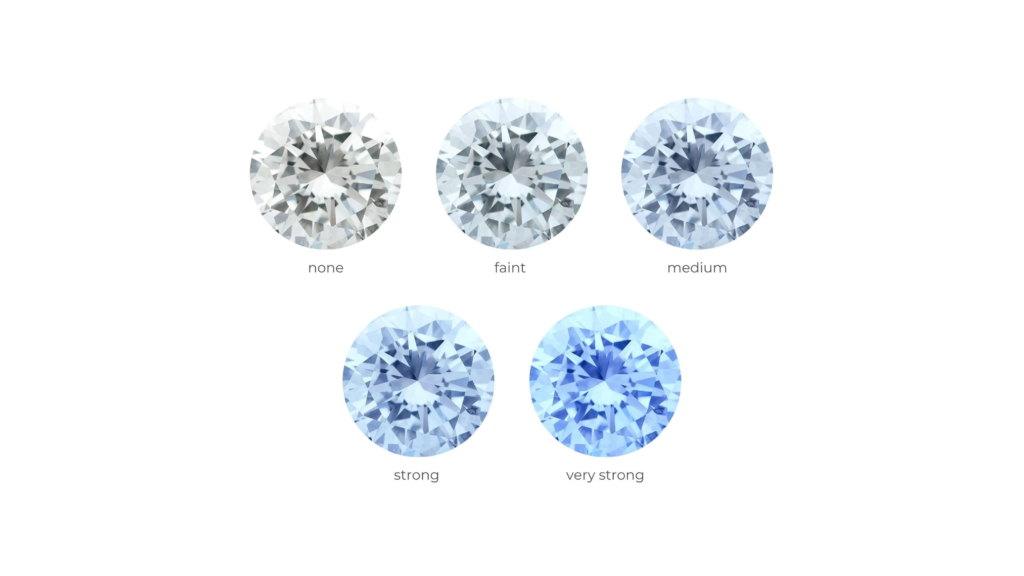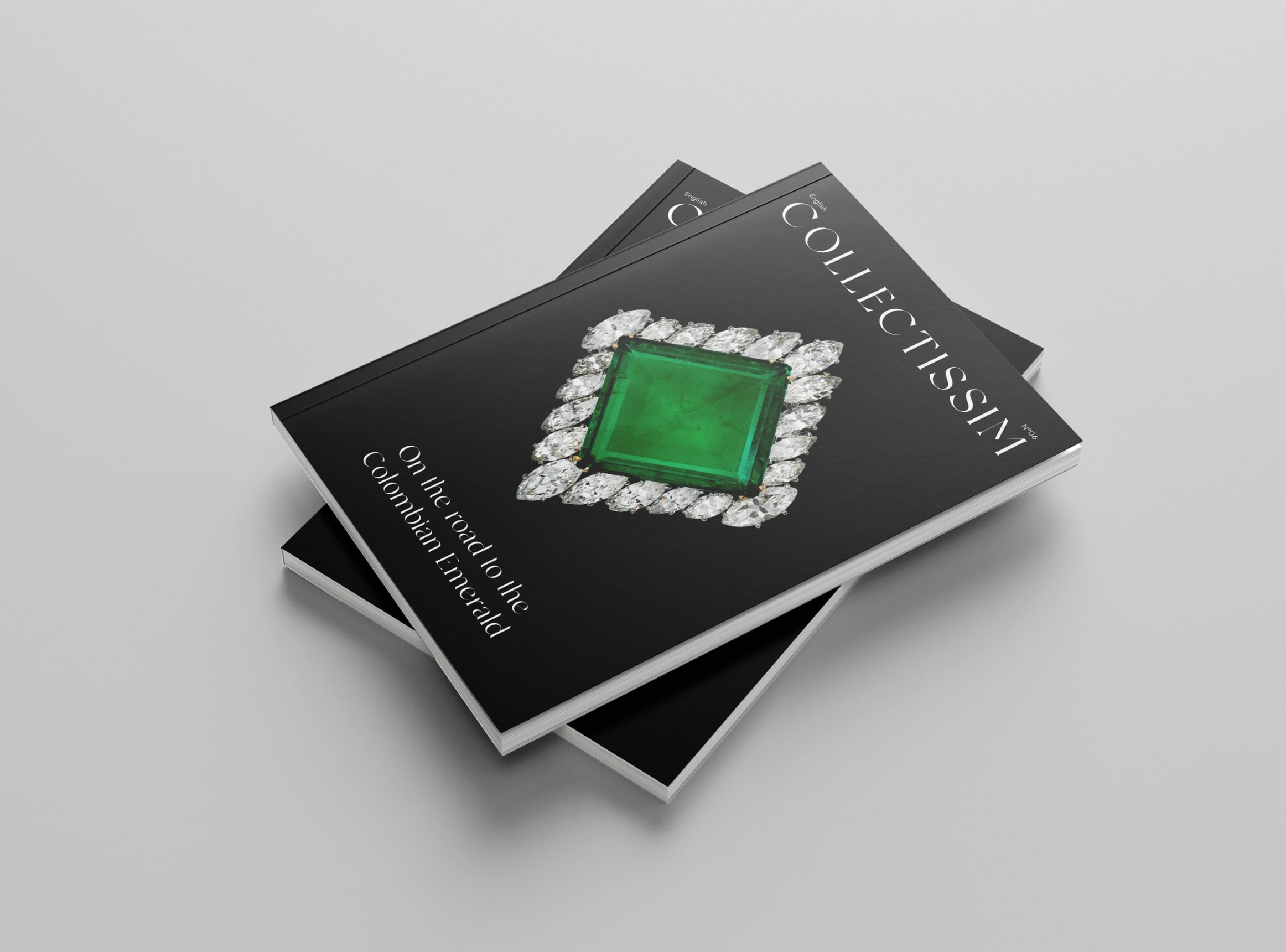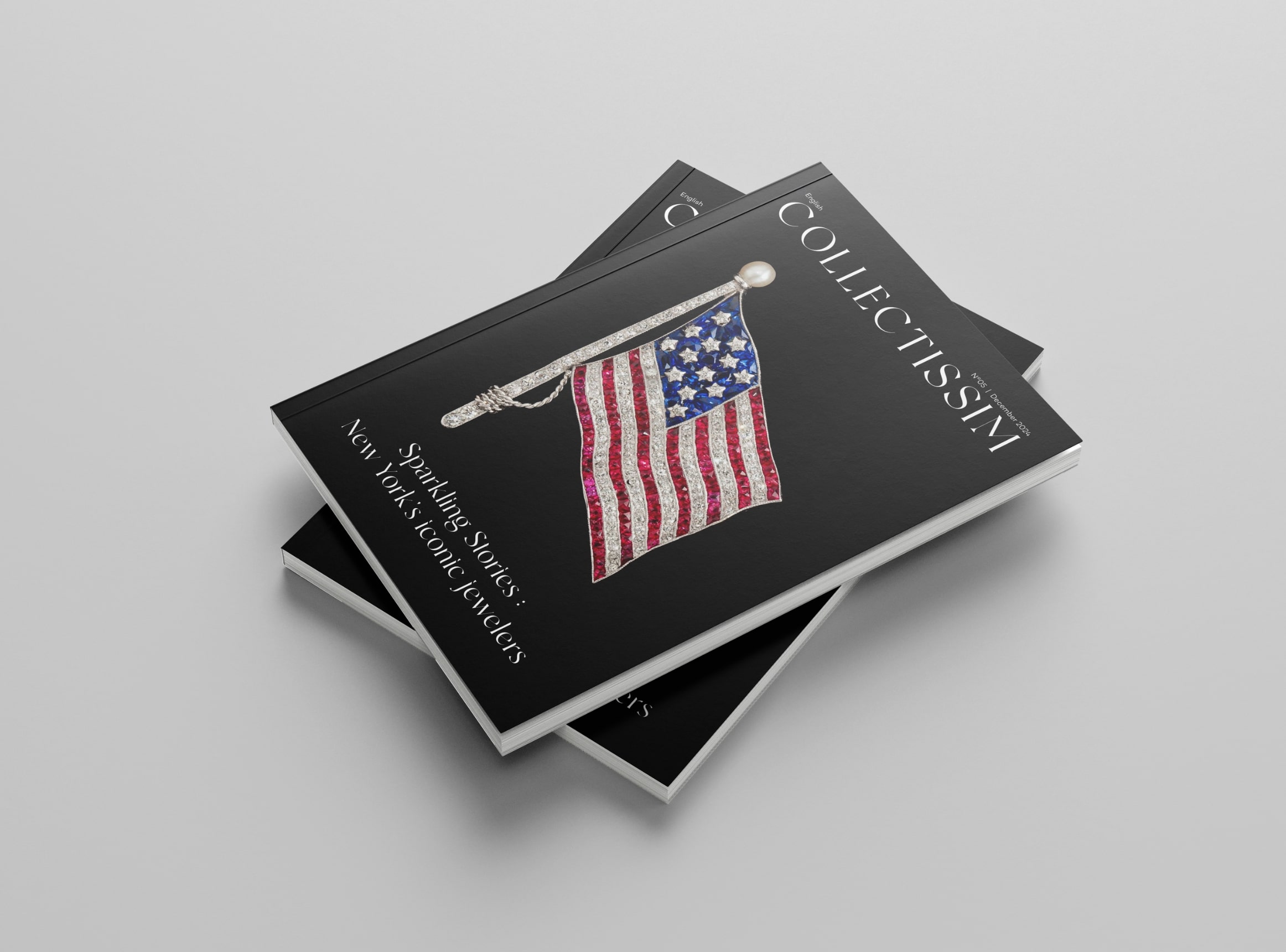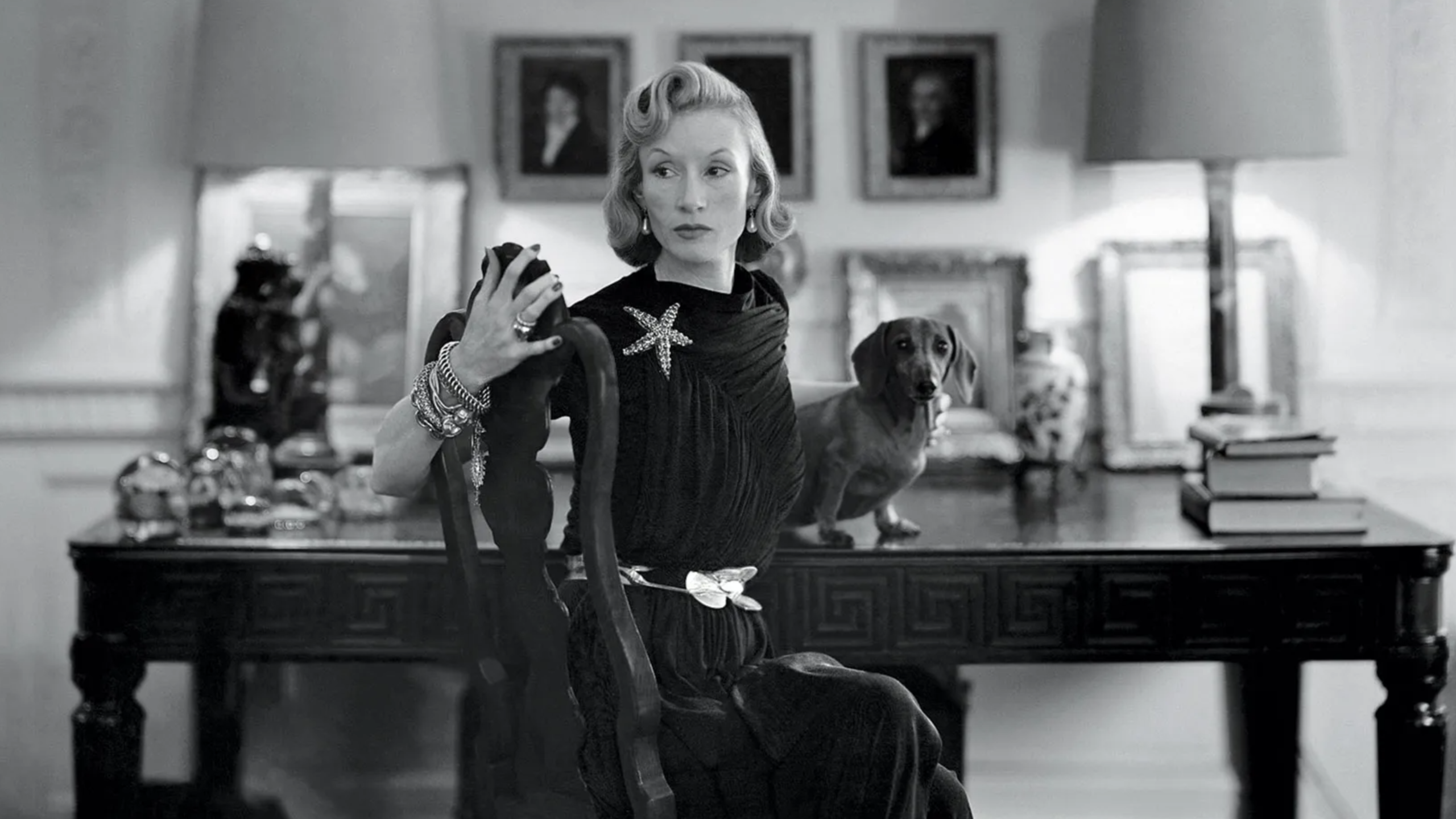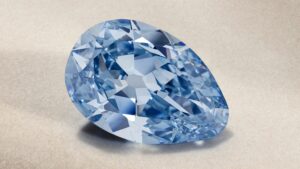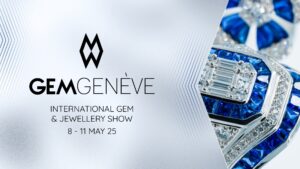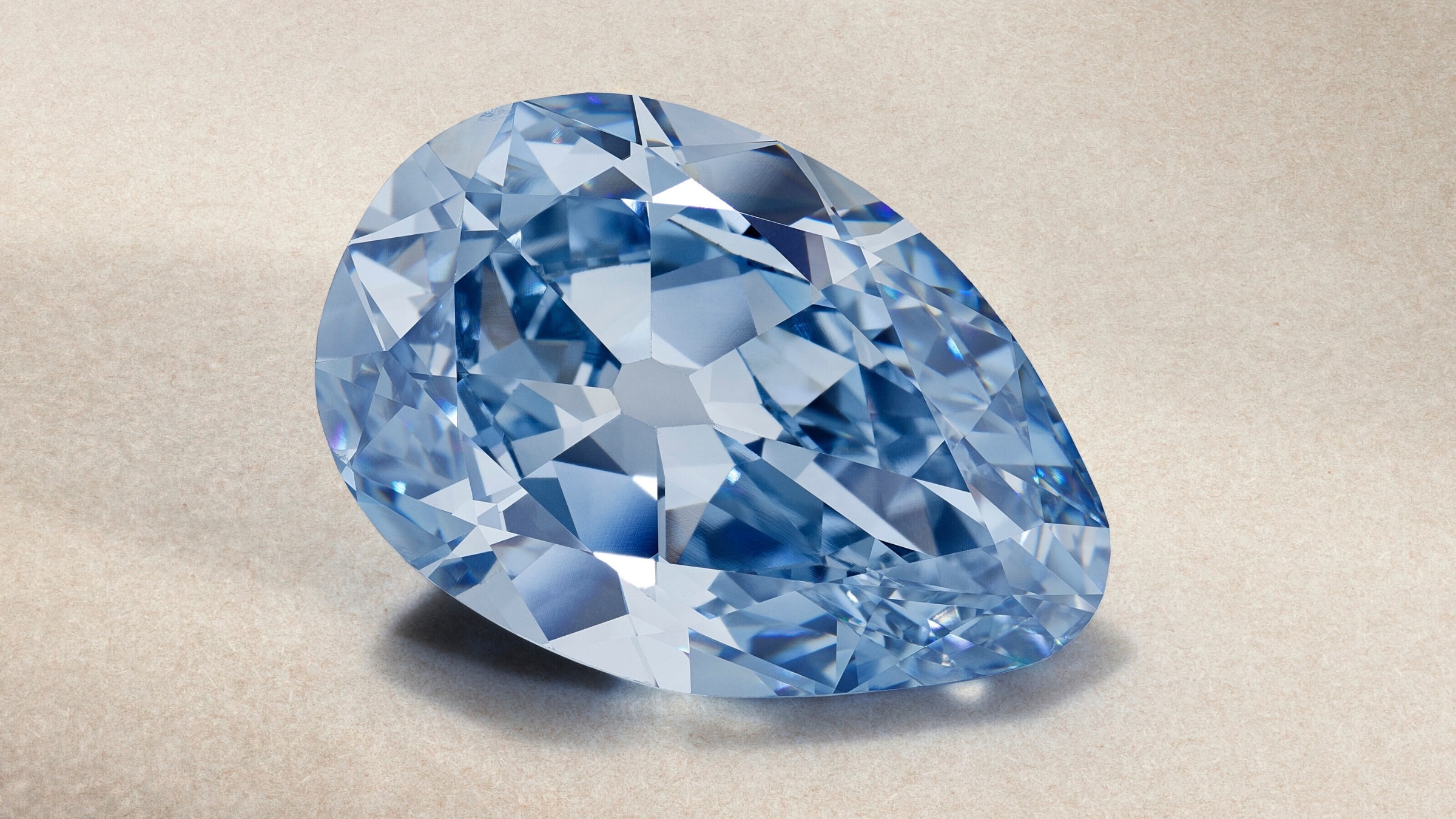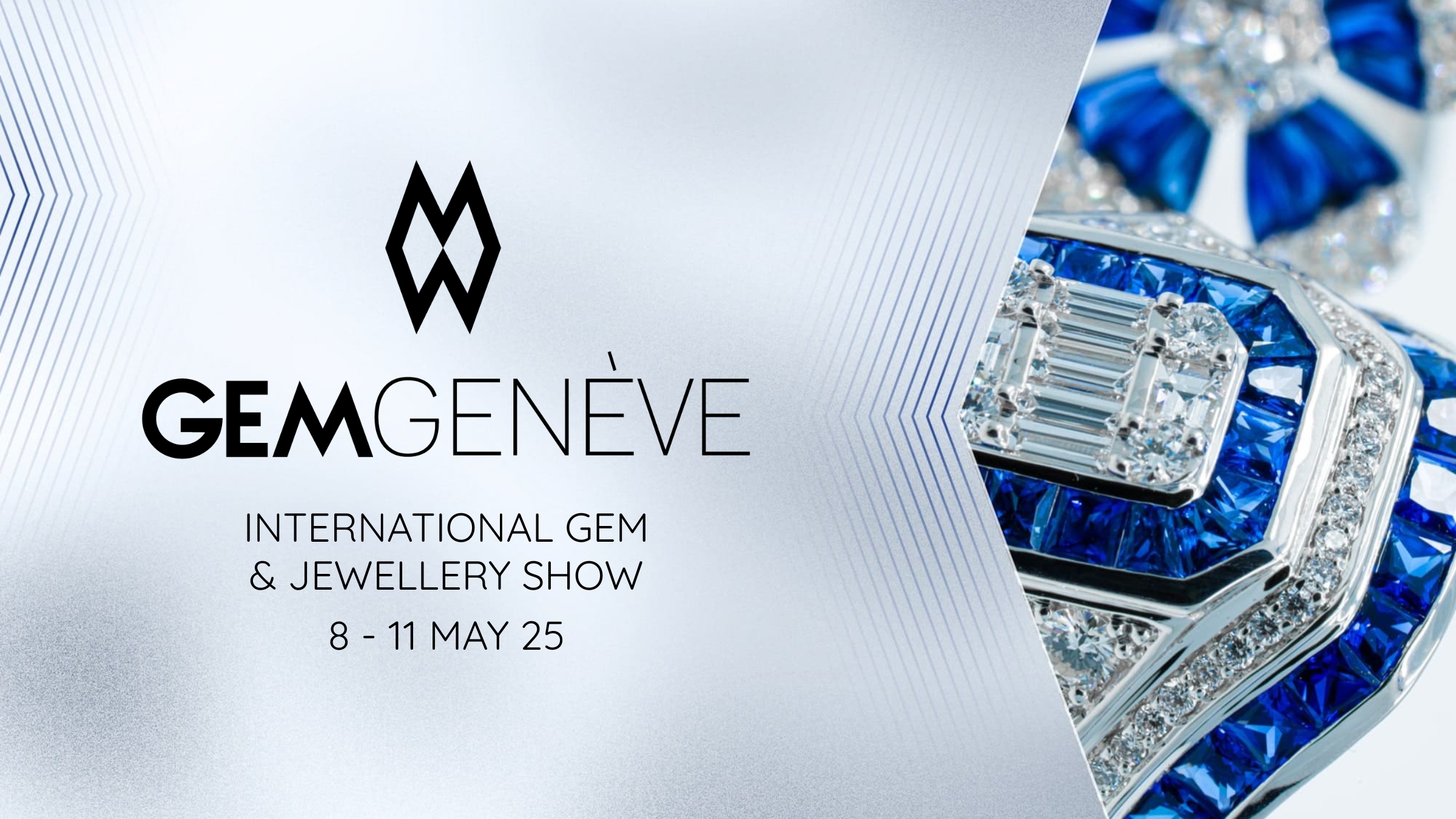Like a human fingerprint, each diamond has its own specific characteristics. The 4Cs – color, clarity, cut and carat – are the four criteria universally used to assess a diamond’s quality.
History of the 4C
The result of a collaboration between De Beers and the GIA (Gemological Institute of America) in 1940, the 4Cs of diamonds are still the benchmark for assessing the quality of this precious stone. Not all diamonds are created equal.
It is therefore necessary to have universal criteria for determining a diamond’s exceptional qualities.
The story of the 4Cs began in the early 20th century in the United States, when Robert M. Shipley, a former jeweler, decided to establish the GIA with the aim of professionalizing the jewelry and gemstone trade through education.
Shipley decided to standardize diamond grading according to color, clarity, cut and carat weight and called them the 4Cs. A new classification to enable diamond merchants and jewelers to agree on the quality of a diamond with a universal language.
Indeed, if we go back to the 16th century, traders used many different and incoherent terms to talk about the quality of a diamond. “Flawless” or ‘with imperfections’ were used to describe clarity; ‘dye’ or ‘hue’ to describe color; and terms such as ‘well-made’ or ‘poorly-made’ to describe cut.
The Cut
The most important element of the 4Cs, the cut corresponds to the way a diamond’s facets interact with light. Its quality is determined by the stone’s symmetry, proportions and polish. Cut, more than any other factor, determines a diamond’s beauty.
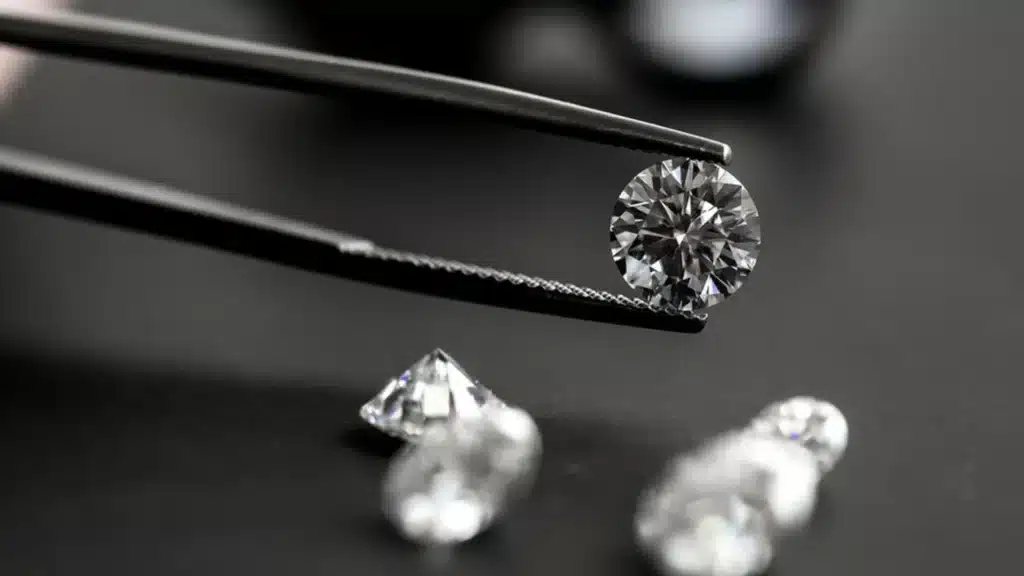
It’s important to note that the cut and shape of a diamond are two distinct things. Cut determines how a diamond’s facets and light interact. Shape describes the geometric appearance of a diamond. Cutting determines the future shape of a rough diamond, not the other way around. Consequently, the term “cut” is often used to mean “shape”.
Simply put, the quality of a diamond’s brilliance depends on its cut. A poorly cut diamond will appear dull, even if it has high grades of color and clarity. A well-cut diamond will reflect light for maximum brilliance.
A diamond’s “cut” is measured by its so-called “cut grade”, corresponding to Excellent, Very Good, Good, Fair or Poor.
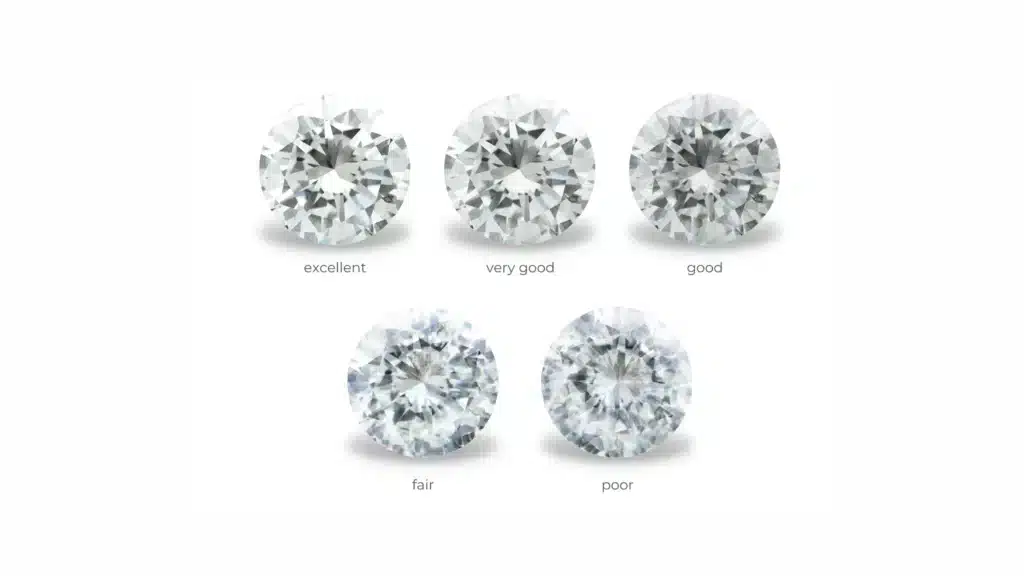
Of the 4Cs, cut is the only criterion influenced by the human hand. When two diamonds are identical in terms of purity, color and carat weight, only the cut can determine whether one is superior to the other. The cut of a diamond is determined by three criteria alone :
Cut precision
The way surfaces and angles articulate with different parts of the stone.
Symmetry
The precision with which the different facets of a diamond align and intersect.
Polishing
The details and position of the facet shapes, as well as the diamond’s exterior finish.
The quality of a diamond’s cut is assessed on a scale ranging from “Excellent” to “Poor”. To be rated “Excellent”, a round brilliant diamond must have :
A table measuring no more than 53% of the diameter.
A crown height of 16.2% of the diameter.
A pavilion depth of 43.1% of the diameter.
The diamond should have a crown angle of 34.5 degrees.
Finally, the diamond should have a pavilion depth of 40.75 degrees.
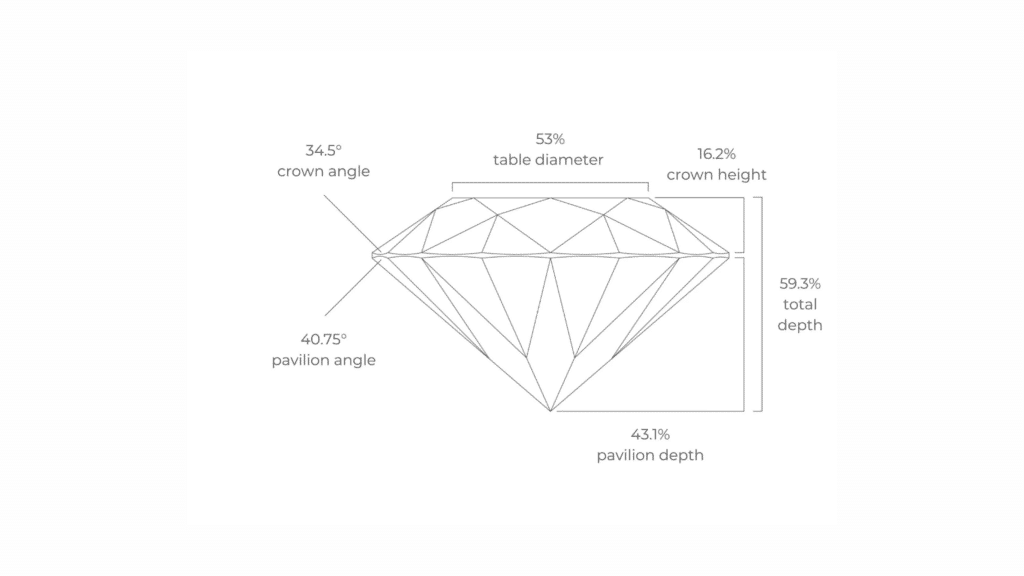
A diamond that’s too deep causes light to leak out, leading to a darker, duller appearance – a phenomenon known as “nailhead”. Conversely, a shallow diamond causes a reflection of the belt inside the diamond, causing a “fisheye” effect.
Diamond Shape
The round brilliant cut is distinguished from so-called “fancy” cuts, such as princess, emerald, oval… and many others.
Brilliant cut : The round brilliant cut (57 facets) is undoubtedly the most accomplished, the one whose optimal proportions have been studied most thoroughly. It is also the most classic.
Fancy” cuts are generally less expensive than round cuts, which are more difficult to appraise, as the quality of the proportions and the cut will greatly influence the price.
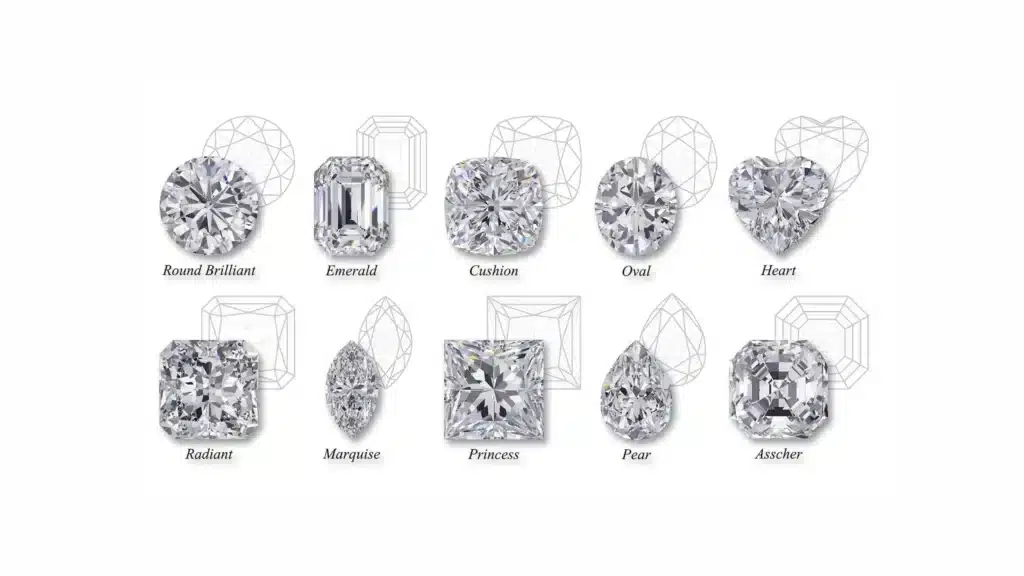
Here are a few examples of common shapes :
Princess cut : suitable for architectural jewelry with clean lines. It’s a square or rectangular cut, usually with 76 facets that ensure strong sparkle.
Emerald cut : the Emerald cut highlights the diamond’s ‘transparent’ beauty. It is a distinguished cut that requires diamonds of good purity.
Oval cut : a resolutely modern shape that combines the classicism of the round brilliant with the elegant femininity of more elongated shapes such as the marquise and the drop.
The Clarity
Measuring the clarity and rarity of the stone, diamond purity is graded according to the visibility of these characteristics at 10x magnification. A stone is said to be “flawless” if, under magnification x 10, it shows no inclusions (internal defects) or imperfections (surface defects).
A diamond of mediocre purity has several defects, which affect its brilliance. Defects interfere with the refraction and reflection of light. Consequently, the lower a diamond’s purity, the more cloudy its appearance.
The purity of a diamond is assessed using the acronyms and grading levels defined by the GIA.
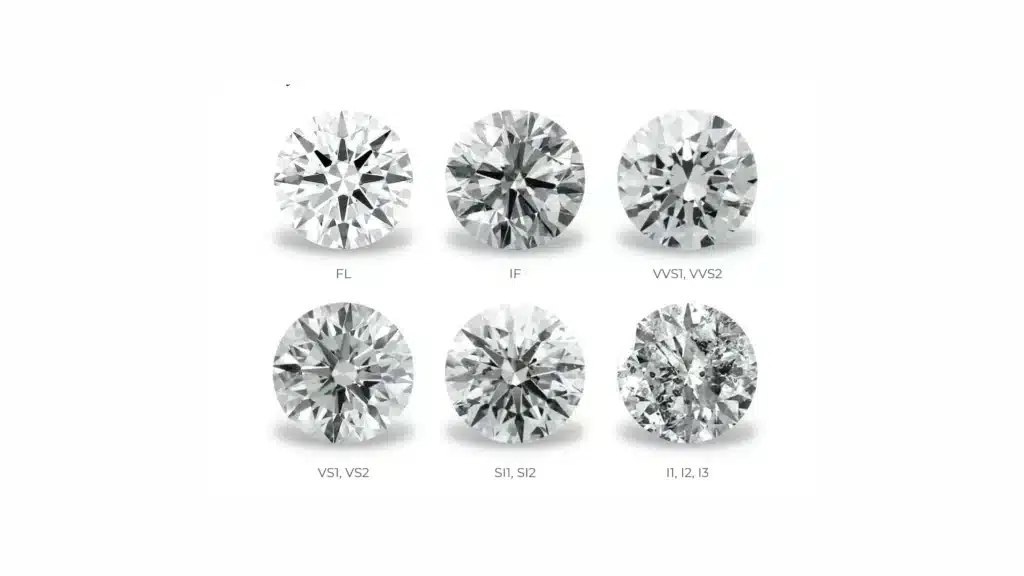
FL Flawless
FL diamonds have no internal or external flaws visible to the trained eye with a 10x loupe, making them the rarest and most expensive clarity grade.
IF Internally Flawless
Also known as “magnifying pure”, IF diamonds are internally flawless. Diamonds of this purity are rare.
VVS1 VVS2 Very very small inclusion
Diamonds with VVS1 purity have tiny inclusions that are very difficult to see with a 10x magnifying glass. Like IF clarity diamonds, diamonds of this purity are extremely rare.
VVS2 clarity diamonds show tiny inclusions that are barely perceptible with a 10x magnifying glass. VVSI clarity diamonds are extremely rare.
VS1 VS2 Very small inclusion
Diamonds with VS1 clarity have very small inclusions, very difficult to detect with a 10x magnifying glass and never visible to the naked eye from the table. VS1 clarity diamonds are less expensive than higher-purity diamonds, yet have inclusions that are totally invisible to the naked eye.
Similarly, VS2 diamonds will have very small inclusions that are difficult to detect with a x10 loupe, but slightly more visible than VS1.
SI1 SI2
SI1 and SI2 clarity diamonds have small inclusions visible with a 10x magnifying glass. Inclusions on SI diamonds remain relatively small and difficult to see with the naked eye.
I1 I2 I3
I diamonds (1, 2 and 3) are said to be “pitted”, i.e. they contain inclusions visible to the naked eye.
Note, however, that the two purity levels I1 and I2 and I3 have significant differences.
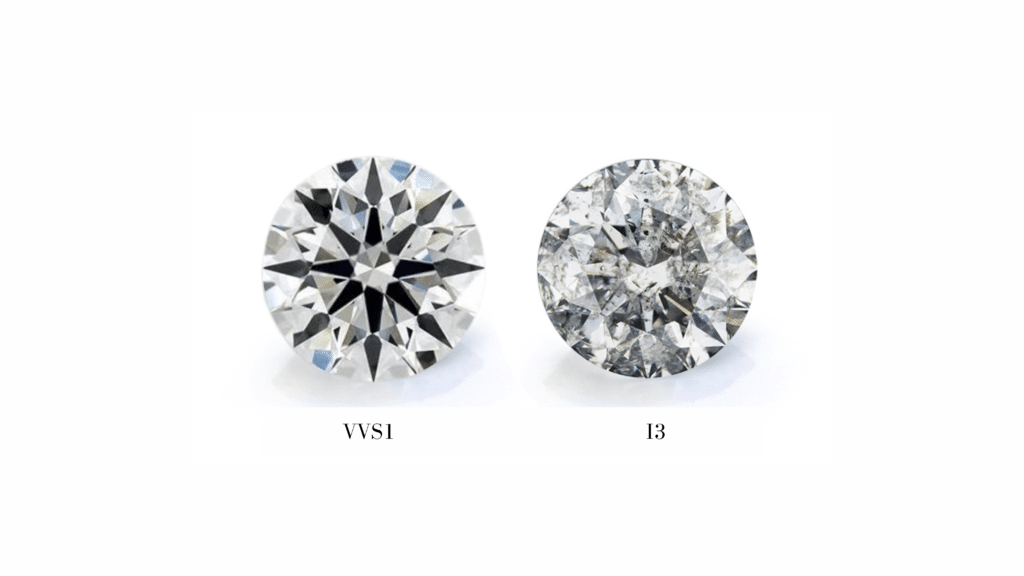
Here are the main inclusions that can be observed in a diamond :
Cloud : Group of microscopic inclusions forming a cloud in the diamond.
Feather : A small crack or fracture. This type of inclusion should not touch the edges of the stone, as they could open a little more and split the diamond.
Crystal : This type of inclusion is often referred to as a “baby diamond”. It is a fragment of diamond (or other mineral) that has been trapped inside the diamond during its formation.
Pinpoint : This type of inclusion is very common, and consists of tiny white or black crystals embedded in the diamond.
Needle : A long, thin needle-shaped inclusion (tiny stem) that is usually white or transparent.
Knot : This is a (transparent) crystal inclusion in the diamond that reaches the diamond’s surface.
Chip : This is a small opening near the edges, facet junctions or surface of the stone.
And the main surface anomalies most frequently found :
Abrasions : Small marks or scratches along the surface or edges of facets.
Extra facet : Additional facets (one or more) that have been placed during the diamond’s cutting and should not have been.
Natural : A small part of the original diamond that is neither cut nor polished.
Polish lines : These are surface lines or tiny scratches left by polishing.
The Color
Color is the second most important criterion of the 4Cs, as the color grade directly influences the stone’s appearance. Diamonds with a mediocre color grade may appear slightly yellow, instead of the brilliant white desired.
Color refers to the natural hue inherent in white diamonds. In their natural state, most white diamonds have a slight yellow tint. The more “colorless” a diamond is, the rarer it is.
The stone is estimated under standardized artificial white light by comparison with standard stones. The color estimate is decisive in the appraisal, as the price of the diamond depends on it. The D color (invisible color) is the most sought-after, but also the most expensive. The K to Z (yellowish) colors are the least appreciated and also the least expensive.
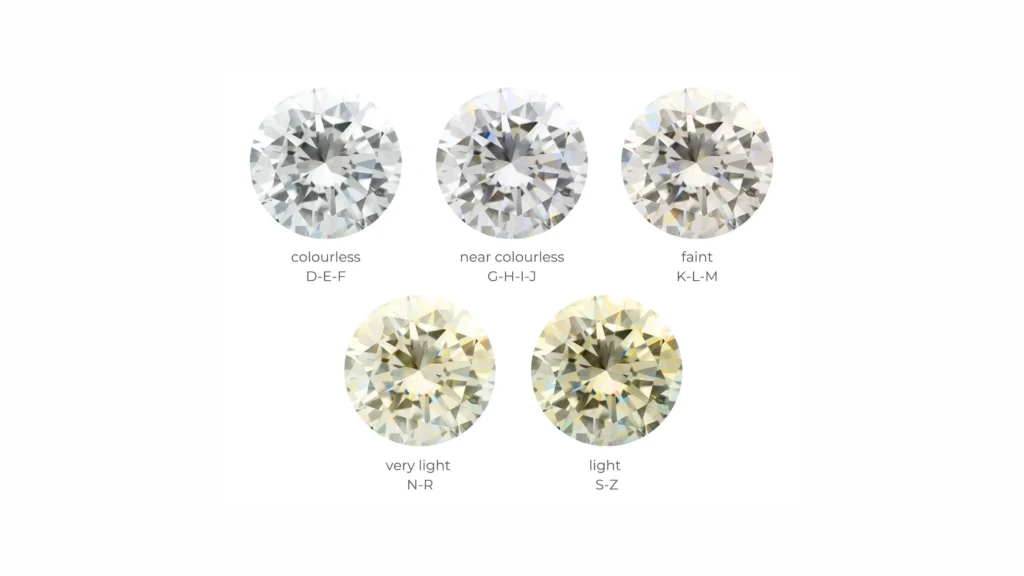
Each letter actually represents a range of colors based on a combination of hue (darkness or lightness) and saturation (intensity). This combination is called color depth, and is used to measure the visibility of a color.
Color is easier to see in large stones than in small ones. For weights under 0.25 ct, only experts can distinguish diamonds in the D to F range, and only if the stones are not set. Part of the difficulty in grading set diamonds lies in the fact that the setting affects the apparent color by covering part of the stone.
Diamonds whose color falls outside the normal range of colors are called colored diamonds. You may also hear them referred to as “fancy” or “fancy-colored” diamonds.
While diamonds within the GIA color rating scale lose value as their hue becomes more vivid, the trend is reversed for fancy-color diamonds, which increase in value the more intense their coloration.
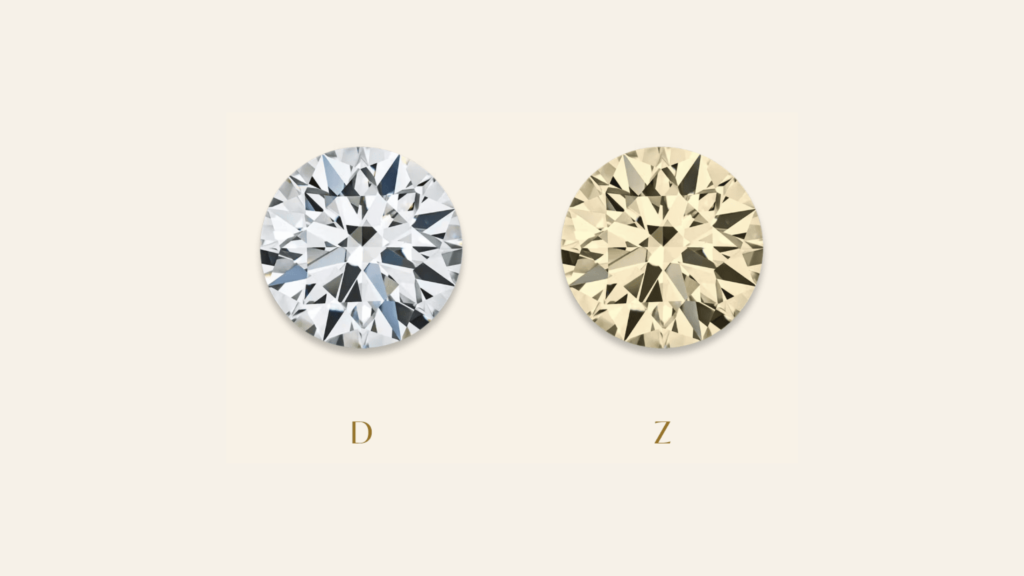
In the case of these colored diamonds, there is a second rating scale that works as follows:
Fancy Light – light color
Fancy – pronounced color
Fancy Intense – intense color
Fancy Vivid – vivid color
Fancy Dark – dark color
Fancy Deep – deep color
Carat
The carat is an extremely precise unit of measurement: 1 carat is precisely equivalent to 0.20 grams. When weighing a gemstone, it’s essential to extend the precision of the measurement to three decimal places, then round off the result with a special ruler.
On the historical side, the term “carat” has its origins in the carob seed, once used as a counterweight in trade. This seed, remarkably constant in weight, became a benchmark. Over time, the carat was standardized at 0.20 grams, providing a universal measure for all gemstones.
Fluorescence
For greater precision, laboratory analysis reports include another characteristic: fluorescence.
For fluorescence analysis, the diamond is exposed to ultraviolet light. A fluorescent diamond will turn blue.
Depending on the fluorescence observed, the diamond will be characterized on the following scale:
None : no fluorescence
Very slight : very little fluorescence
Slight or Faint : little fluorescence
Medium : medium fluorescence
Strong : strong fluorescence
Very strong : very strong fluorescence.
